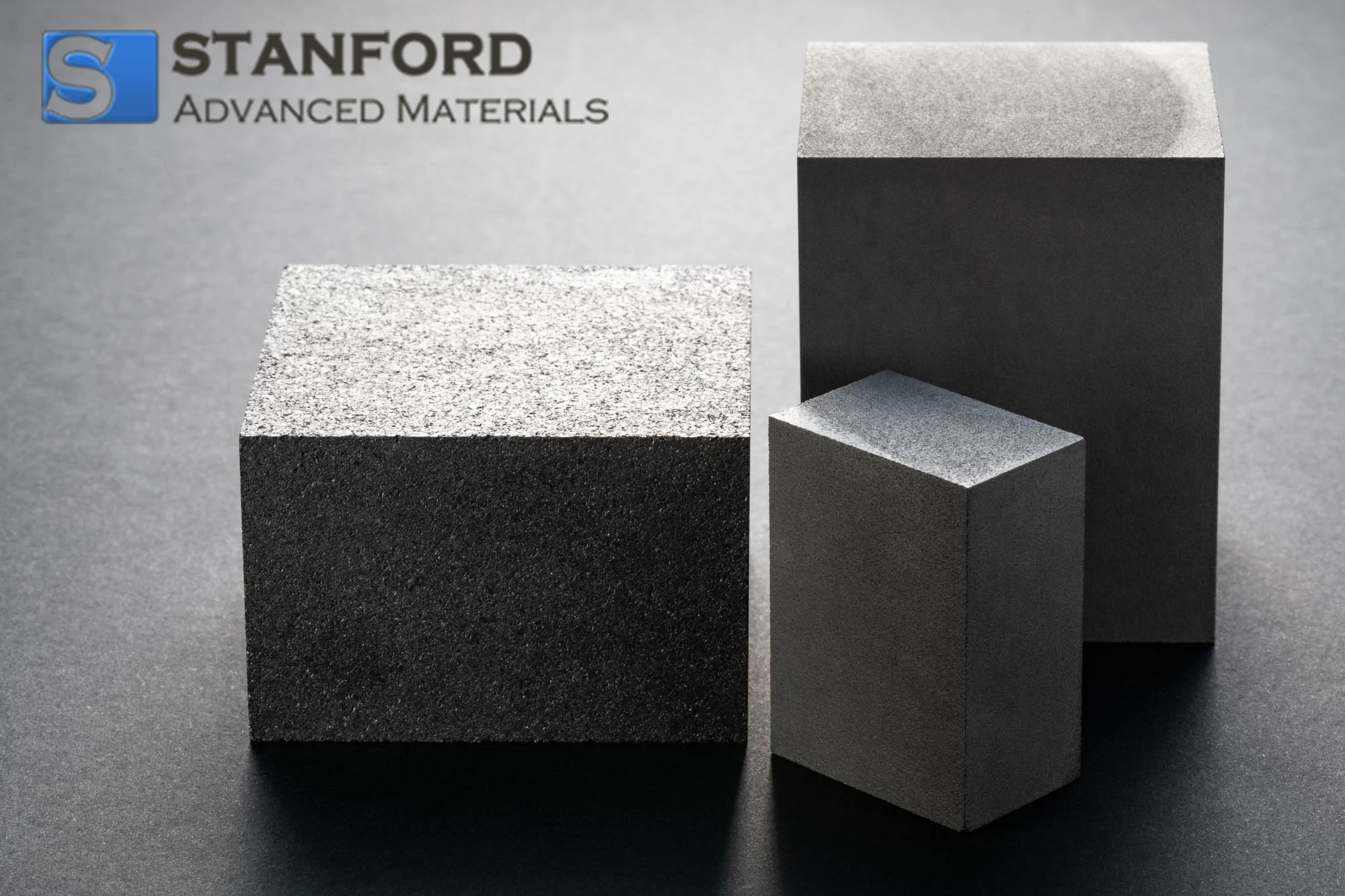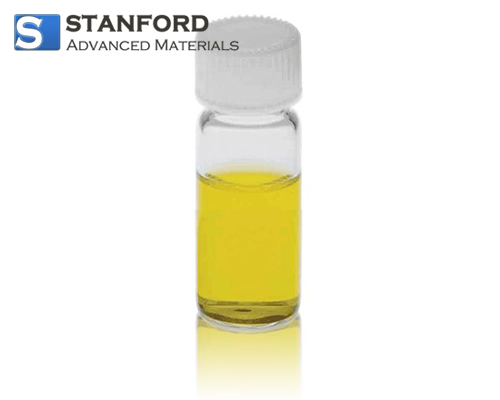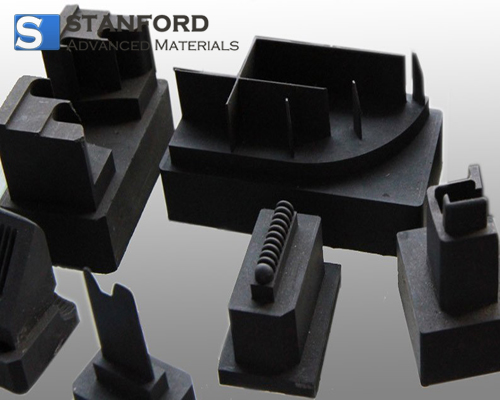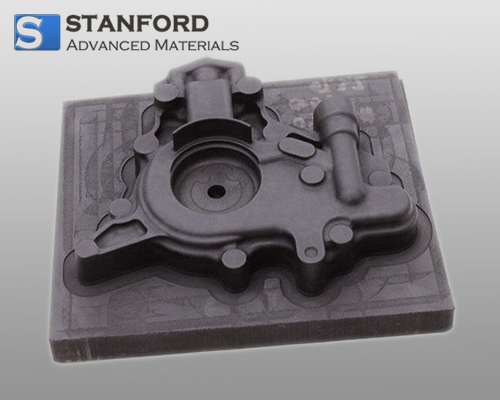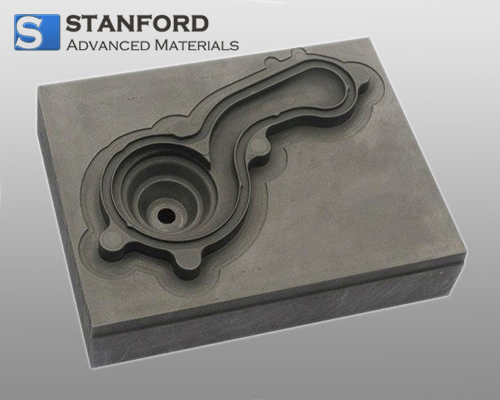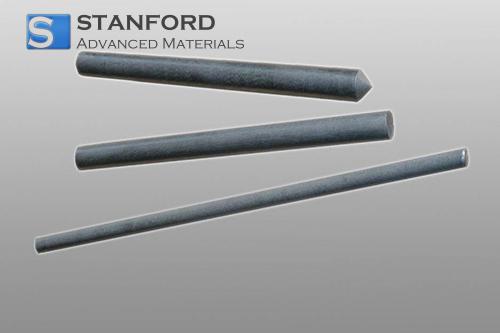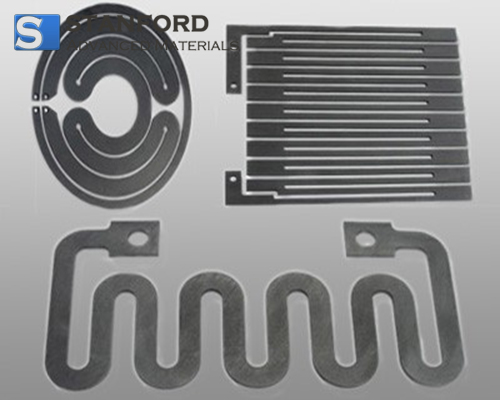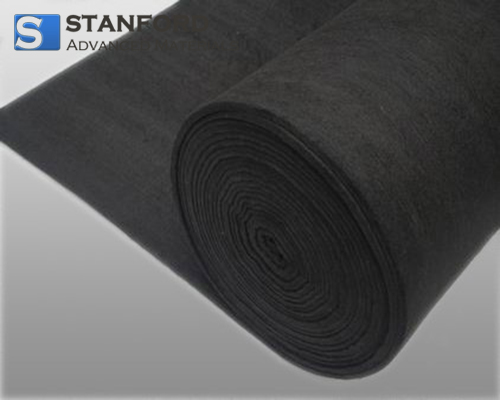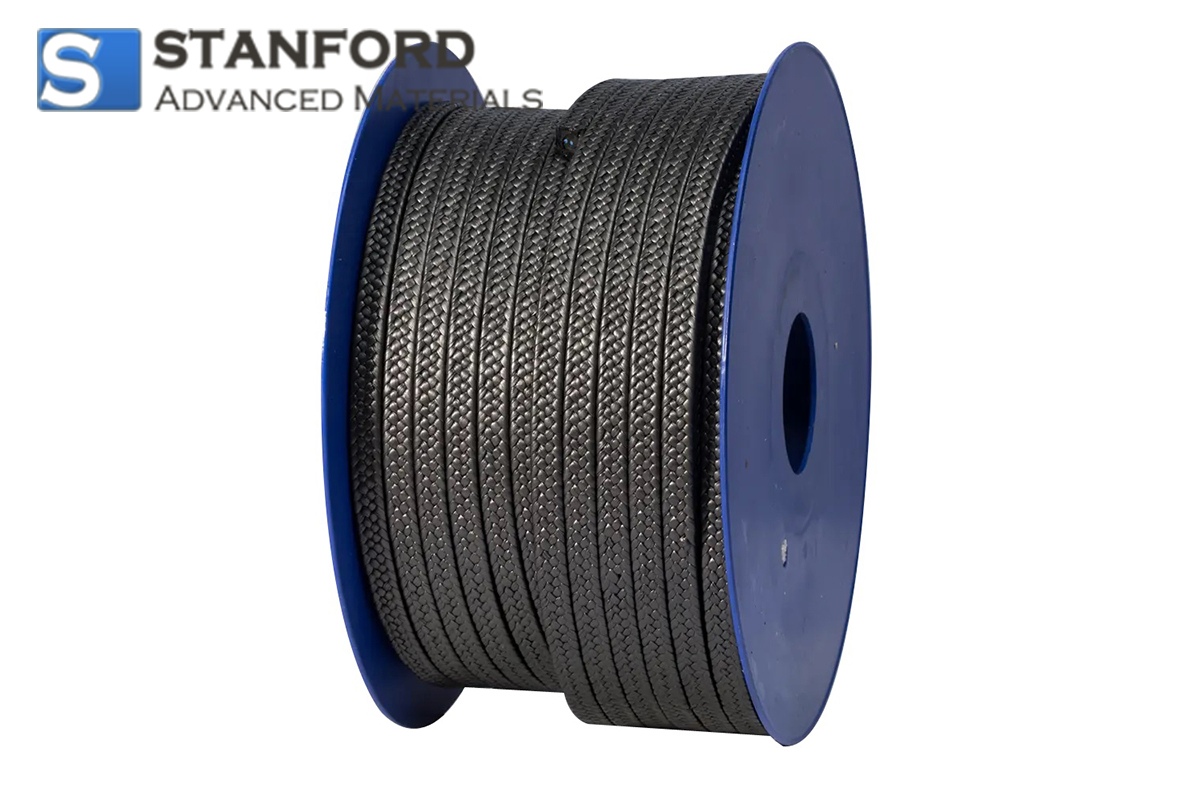SAFETY DATA SHEET
Version
3.0 Revision Date 09/04/2017
1. PRODUCT AND COMPANY IDENTIFICATION
1.1Product identifiers
Product name: Graphite
Brand: SAM
CAS-No. : 7782-42-5
1.2 Relevant identified uses of the substance or mixture and uses advised against
Identified uses: Laboratory chemicals, Synthesis of substances
1.3 Details of the supplier of the safety data sheet
Stanford Advanced
Company :
Materials
23661 Birtcher Dr. Lake Forest, CA 92630 USA
Telephone: +1 (949) 407-8904
Fax: +1 (949) 812-6690
1.4 Emergency telephone number
Emergency Phone # : +1-(949) 407-8904
2. HAZARDS IDENTIFICATION
2.1 Classification of the substance or mixture
Not a hazardous substance or mixture.
2.2 GHS Label elements, including precautionary statements
Not a hazardous substance or mixture.
2.3 Hazards not otherwise classified (HNOC) or not covered by GHS - none
3. COMPOSITION/INFORMATION ON INGREDIENTS
3.1Substances
Formula: C
Molecular weight: 12.01 g/mol
CAS-No. : 7782-42-5
EC-No. : 231-955-3
Hazardous components
|
Component
|
Classification
|
Concentration
|
|
Graphite
|
| |
|
<= 100 %
|
4. FIRST AID MEASURES
4.1 Description of first aid measures
If inhaled
If breathed in, move person into fresh air. If not breathing, give artificial respiration.
In case of skin contact
Wash off with soap and plenty of water.
In case of eye contact
Flush eyes with water as a precaution.
If swallowed
Never give anything by mouth to an unconscious person. Rinse mouth with water.
4.2 Most important symptoms and effects, both acute and delayed
The most important known symptoms and effects are described in the labelling (see section 2.2) and/or in section 11
4.3 Indication of any immediate medical attention and special treatment
needed No data available
5. FIREFIGHTING MEASURES
5.1 Extinguishing media
Suitable extinguishing media
Use water spray, alcohol-resistant foam, dry chemical or carbon dioxide.
5.2 Special hazards arising from the substance or mixture
No data available
5.3 Advice for firefighters
Wear self-contained breathing apparatus for firefighting if necessary.
5.4 Further information
No data available
6. ACCIDENTAL RELEASE MEASURES
6.1 Personal precautions, protective equipment and emergency procedures
Avoid dust formation. Avoid breathing vapours, mist or gas.
For personal protection see section 8.
6.2 Environmental precautions
Do not let product enter drains.
6.3 Methods and materials for containment and cleaning up
Sweep up and shovel. Keep in suitable, closed containers for disposal.
6.4 Reference to other sections
For disposal see section 13.
7. HANDLING AND STORAGE
7.1 Precautions for safe handling
Further processing of solid materials may result in the formation of combustible dusts. The potential for combustible dust formation should be taken into consideration before additional processing occurs. Provide appropriate exhaust ventilation at places where dust is formed.
For precautions see section 2.2.
7.2 Conditions for safe storage, including any incompatibilities
Keep container tightly closed in a dry and well-ventilated place.
7.3 Specific end use(s)
Apart from the uses mentioned in section 1.2 no other specific uses are stipulated
8. EXPOSURE CONTROLS/PERSONAL
PROTECTION 8.1 Control parameters
Components with workplace control parameters
|
Component
|
CAS-No.
|
Value
|
Control
parameters
|
Basis
|
|
Graphite
|
7782-42-5
|
TWA
|
15.000000Millio n particles per cubic foot
|
USA. Occupational Exposure Limits (OSHA) - Table Z-3 Mineral Dusts
|
| |
Remarks
|
Based on impinger samples counted by light-field techniques. mppcf X 35.3 = million particles per cubic meter = particles per c.c
|
| |
|
TWA
|
2.500000
mg/m3
|
USA. NIOSH Recommended Exposure Limits
|
| |
|
Also see specific listing for Graphite (synthetic).
|
| |
|
TWA
|
15.000000
mg/m3
|
USA. Occupational Exposure Limits (OSHA) - Table Z-1 Limits for Air Contaminants
|
| |
|
TWA
|
5.000000
mg/m3
|
USA. Occupational Exposure Limits (OSHA) - Table Z-1 Limits for Air Contaminants
|
| |
|
TWA
|
2.000000
mg/m3
|
USA. ACGIH Threshold Limit Values (TLV)
|
| |
|
Pneumoconiosis
|
| |
|
TWA
|
2.5 mg/m3
|
USA. NIOSH Recommended Exposure Limits
|
| |
|
Also see specific listing for Graphite (synthetic).
|
| |
|
See table Z-3
|
| |
|
TWA
|
15Million
particles per
cubic foot
|
USA. Occupational Exposure Limits (OSHA) - Table Z-3 Mineral Dusts
|
| |
|
Based on impinger samples counted by light-field techniques. mppcf X 35.3 = million particles per cubic meter = particles per c.c
|
| |
|
TWA
|
2 mg/m3
|
USA. ACGIH Threshold Limit Values (TLV)
|
| |
|
Pneumoconiosis
|
| |
|
PEL
|
10 mg/m3
|
California permissible exposure limits for chemical contaminants (Title 8, Article 107)
|
| |
|
PEL
|
5 mg/m3
|
California permissible exposure limits for chemical contaminants (Title 8, Article 107)
|
| |
|
PEL
|
2.5 mg/m3
|
California permissible exposure limits for chemical contaminants (Title 8, Article 107)
|
8.2 Exposure controls
Appropriate engineering controls
General industrial hygiene practice.
Personal protective equipment
Eye/face protection
Use equipment for eye protection tested and approved under appropriate government standards such as NIOSH (US) or EN 166(EU).
Skin protection
Handle with gloves. Gloves must be inspected prior to use. Use proper glove removal technique (without touching glove's outer surface) to avoid skin contact with this product. Dispose of contaminated gloves after use in accordance with applicable laws and good laboratory practices. Wash and dry hands.
Full contact
Material: Nitrile rubber
Minimum layer thickness: 0.11 mm
Break through time: 480 min
Material tested:Dermatril® (KCL 740 / Aldrich Z677272, Size M)
Splash contact
Material: Nitrile rubber
Minimum layer thickness: 0.11 mm
Break through time: 480 min
Material tested:Dermatril® (KCL 740 / Aldrich Z677272, Size M)
data source: KCL GmbH, D-36124 Eichenzell, phone +49 (0)6659 87300, e-mail sales@kcl.de, test method: EN374
If used in solution, or mixed with other substances, and under conditions which differ from EN 374, contact the supplier of the CE approved gloves. This recommendation is advisory only and must be evaluated by an industrial hygienist and safety officer familiar with the specific situation of anticipated use by our customers. It should not be construed as offering an approval for any specific use scenario.
Body Protection
Choose body protection in relation to its type, to the concentration and amount of dangerous substances, and to the specific work-place., The type of protective equipment must be selected according to the concentration and amount of the dangerous substance at the specific workplace.
Respiratory protection
Respiratory protection is not required. Where protection from nuisance levels of dusts are desired, use type N95 (US) or type P1 (EN 143) dust masks. Use respirators and components tested and approved under appropriate government standards such as NIOSH (US) or CEN (EU).
Control of environmental exposure
Do not let product enter drains.
9. PHYSICAL AND CHEMICAL PROPERTIES
9.1 Information on basic physical and chemical properties
a) Appearance Form: flakes
Colour: grey
b) Odour odourless
c) Odour Threshold No data available
d) pH No data available
e) Melting point/freezing Melting point/range: 3,652 - 3,697 °C (6,606 - 6,687 °F) - lit.
point
f) Initial boiling point and No data available
boiling range
g) Flash point No data available
h) Evaporation rate No data available
i) Flammability (solid, gas) No data available
j) Upper/lower No data available
flammability or
explosive limits
k) Vapour pressure No data available
l) Vapour density No data available
m) Relative density 1.900 g/cm3
n) Water solubility slightly soluble
o) Partition coefficient: n- No data available
octanol/water
p) Auto-ignition No data available
temperature
q) Decomposition No data available
temperature
r) Viscosity No data available
s) Explosive properties t)
Oxidizing properties
9.2 Other safety information No data available
10. STABILITY AND REACTIVITY
10.1 Reactivity
No data available
10.2 Chemical stability
No data available No data available
Stable under recommended storage conditions.
10.3 Possibility of hazardous reactions
No data available
10.4 Conditions to avoid
No data available
10.5 Incompatible materials
Strong oxidizing agents
10.6 Hazardous decomposition products
Hazardous decomposition products formed under fire conditions. - Carbon oxides
Other decomposition products - No data available
In the event of fire: see section 5
11. TOXICOLOGICAL INFORMATION
11.1 Information on toxicological effects
Acute toxicity
LD50 Oral - Rat - female - > 2,000 mg/kg
(OECD Test Guideline 423)
LC50 Inhalation - Rat - male and female - 4 h - 2,000 mg/m3
(OECD Test Guideline 403)
Dermal: No data available
No data available
Skin corrosion/irritation
Skin - Rabbit
Result: No skin irritation
(OECD Test Guideline 404)
Serious eye damage/eye irritation
Eyes - Rabbit
Result: No eye irritation
(OECD Test Guideline 405)
Respiratory or skin sensitisation
- Mouse
Did not cause sensitisation on laboratory animals.
(OECD Test Guideline 429)
Germ cell mutagenicity
in vitro assay
S. typhimurium
Result: negative
Carcinogenicity
IARC: No component of this product present at levels greater than or equal to 0.1% is identified as probable, possible or confirmed human carcinogen by IARC.
NTP: No component of this product present at levels greater than or equal to 0.1% is identified as a
known or anticipated carcinogen by NTP.
OSHA: No component of this product present at levels greater than or equal to 0.1% is identified as a carcinogen or potential carcinogen by OSHA.
Reproductive toxicity
No data available
No data available
Specific target organ toxicity - single exposure
No data available
Specific target organ toxicity - repeated exposure
No data available
Aspiration hazard
No data available
Additional Information
Repeated dose toxicity
RTECS: MD9659600
Rat - male - Feed - NOAEL : 813 mg/kg
To the best of our knowledge, the chemical, physical, and toxicological properties have not been thoroughly investigated.
12. ECOLOGICAL INFORMATION
12.1 Toxicity
Toxicity to fish semi-static test LC50 - Danio rerio (zebra fish) - > 100 mg/l - 96 h (OECD Test Guideline 203)
Toxicity to daphnia and static test EC50 - Daphnia magna (Water flea) - > 100 mg/l - 48 h other aquatic (OECD Test Guideline 202)
invertebrates
Toxicity to algae static test EC50 - Pseudokirchneriella subcapitata - > 100 mg/l - 72 h (OECD Test Guideline 201)
12.2 Persistence and degradability
No data available
12.3 Bioaccumulative potential
No data available
12.4 Mobility in soil
No data available
12.5 Results of PBT and vPvB assessment
PBT/vPvB assessment not available as chemical safety assessment not required/not conducted 12.6 Other adverse effects
No data available
13. DISPOSAL CONSIDERATIONS
13.1 Waste treatment methods
Product
Offer surplus and non-recyclable solutions to a licensed disposal company.
Contaminated packaging
Dispose of as unused product.
14. TRANSPORT INFORMATION
DOT (US)
Not dangerous goods
IMDG
Not dangerous goods
IATA
Not dangerous goods
15. REGULATORY INFORMATION
SARA 302 Components
No chemicals in this material are subject to the reporting requirements of SARA Title III, Section 302.
SARA 313 Components
This material does not contain any chemical components with known CAS numbers that exceed the threshold (De Minimis) reporting levels established by SARA Title III, Section 313.
SARA 311/312 Hazards
No SARA Hazards
Massachusetts Right To Know Components
CAS-No. Revision Date
Graphite 7782-42-5 1989-08-11
Pennsylvania Right To Know Components
CAS-No. Revision Date
Graphite 7782-42-5 1989-08-11
New Jersey Right To Know Components
CAS-No. Revision Date
Graphite 7782-42-5 1989-08-11
California Prop. 65 Components
This product does not contain any chemicals known to State of California to cause cancer, birth defects, or any other reproductive harm.
16. OTHER INFORMATION
HMIS Rating
Health hazard: 0
Chronic Health Hazard:
Flammability: 0
Physical Hazard 0
NFPA Rating
Health hazard: 0
Fire Hazard: 0
Reactivity Hazard: 0
Further information
This material safety data sheet is offered solely for your information, consideration, and investigation. Stanford Advanced Materials provides no warranties, either express or implied, and assumes no responsibility for the accuracy or completeness of the data contained herein.

